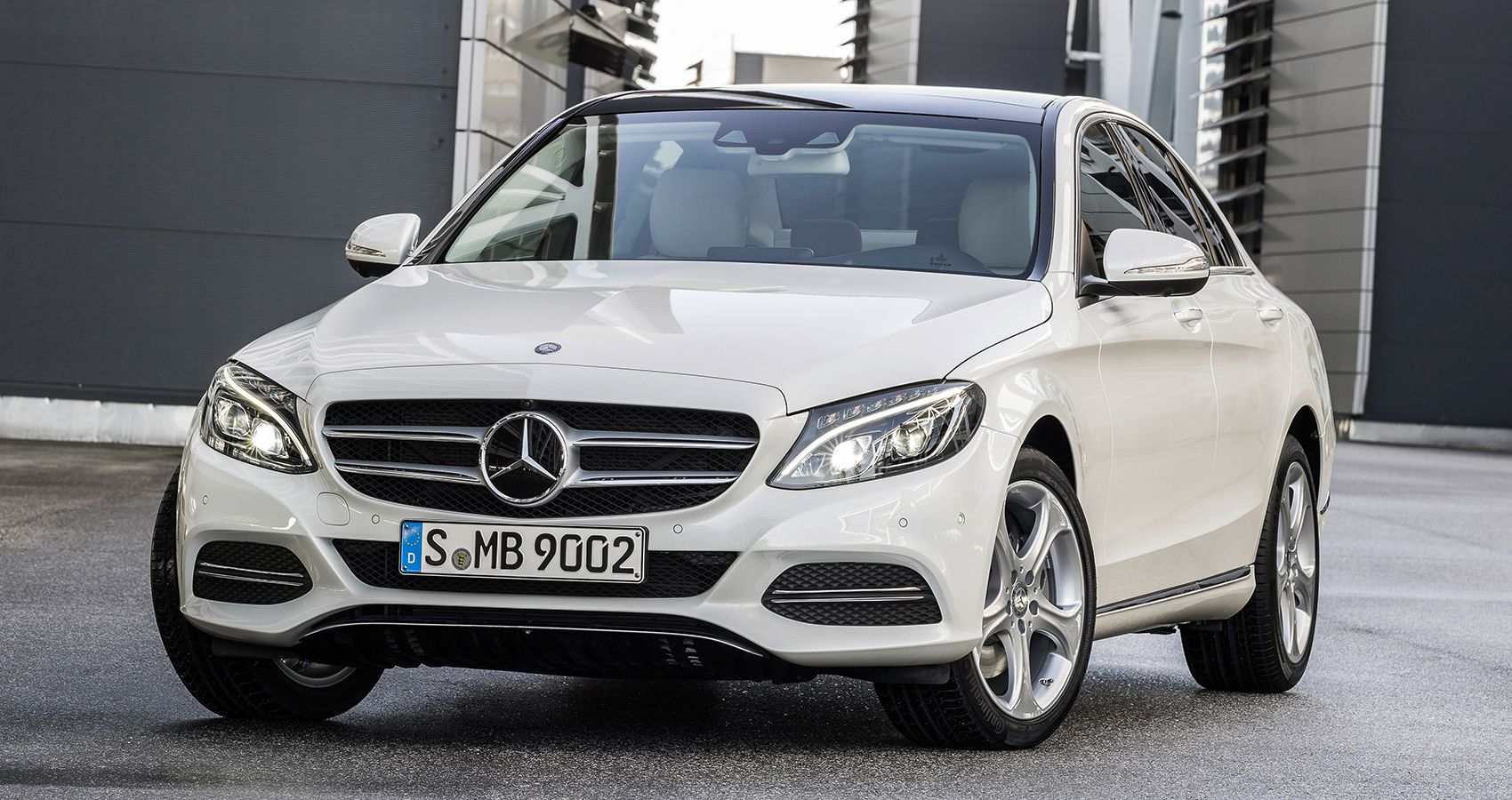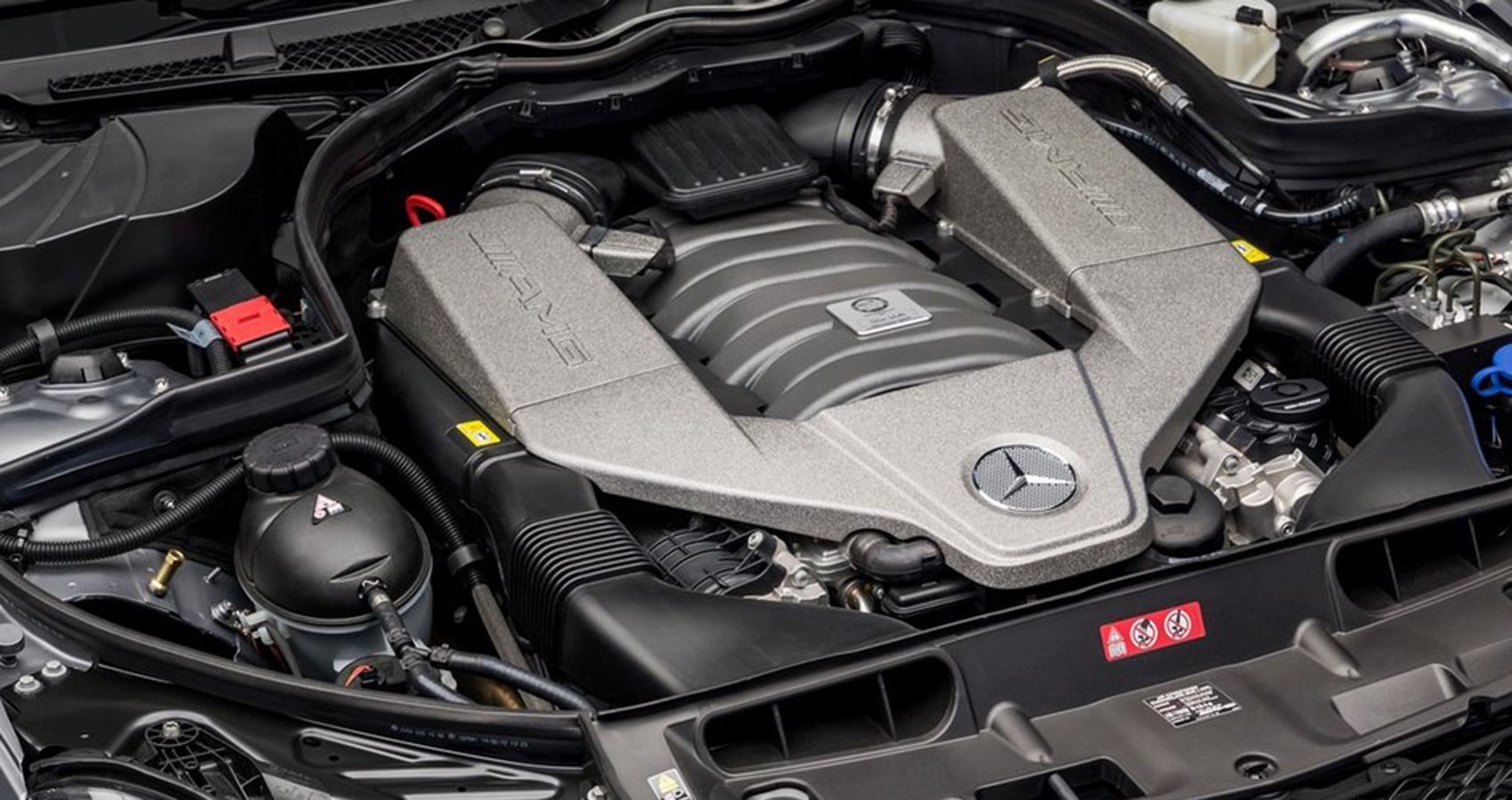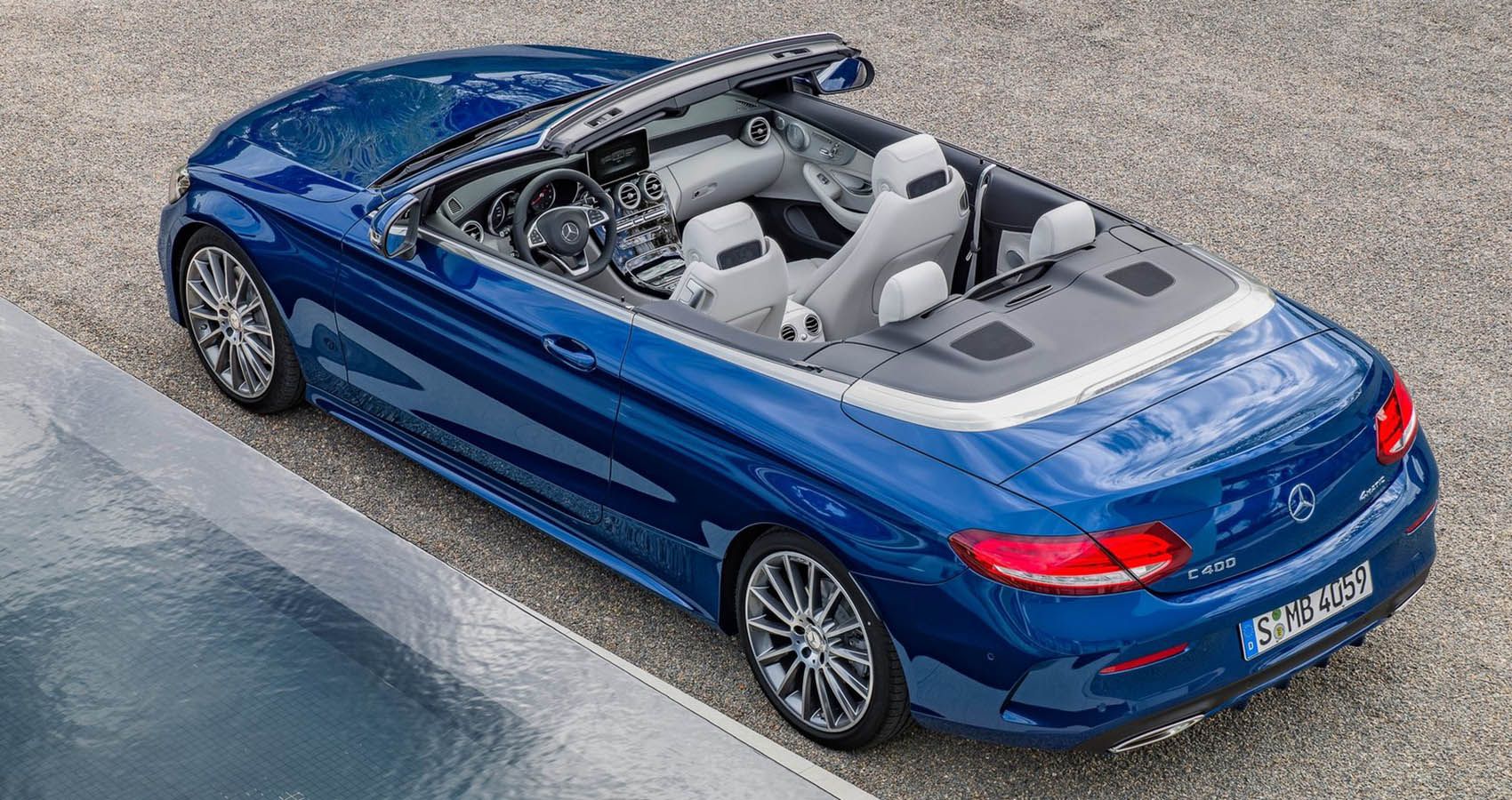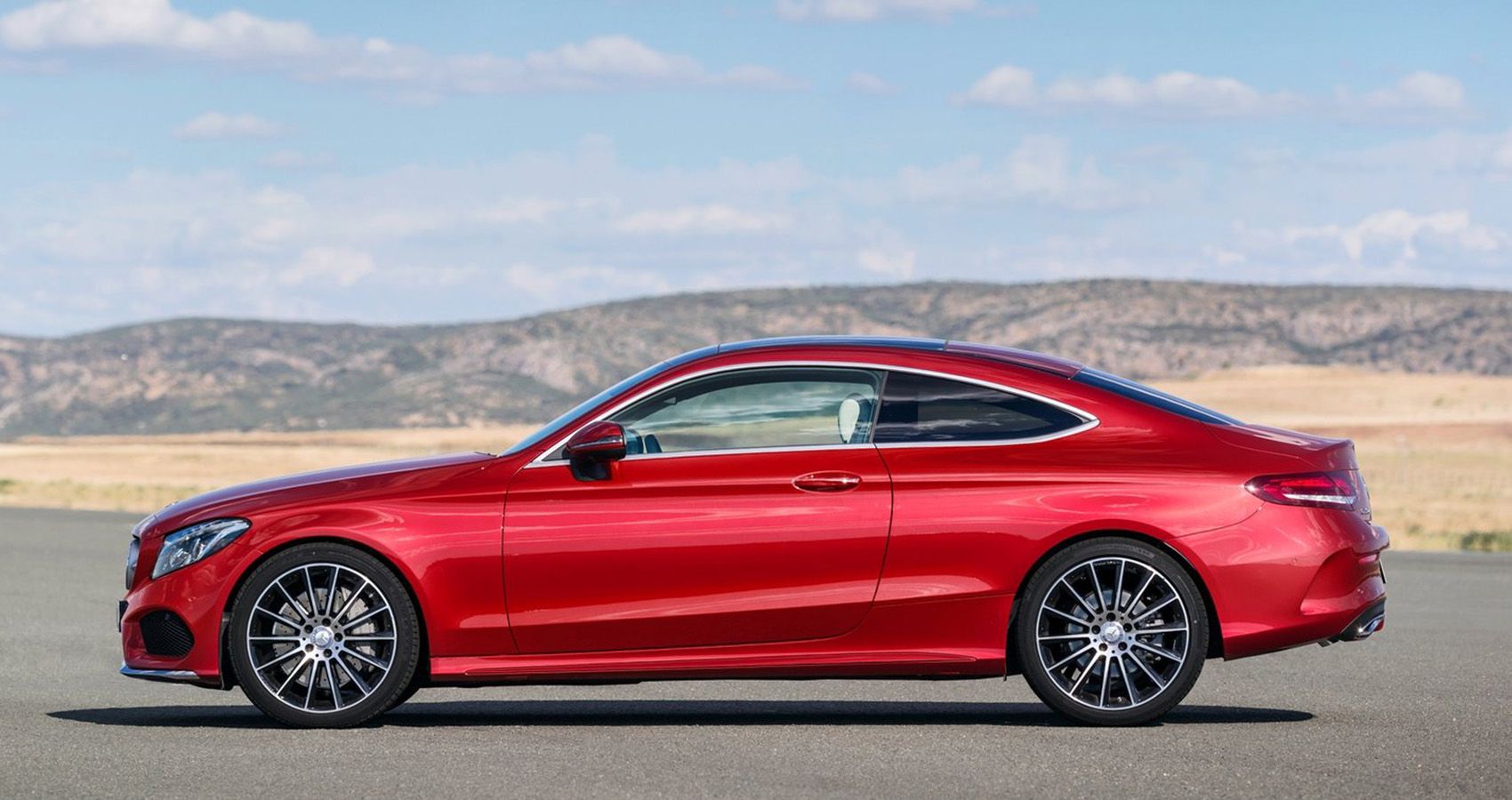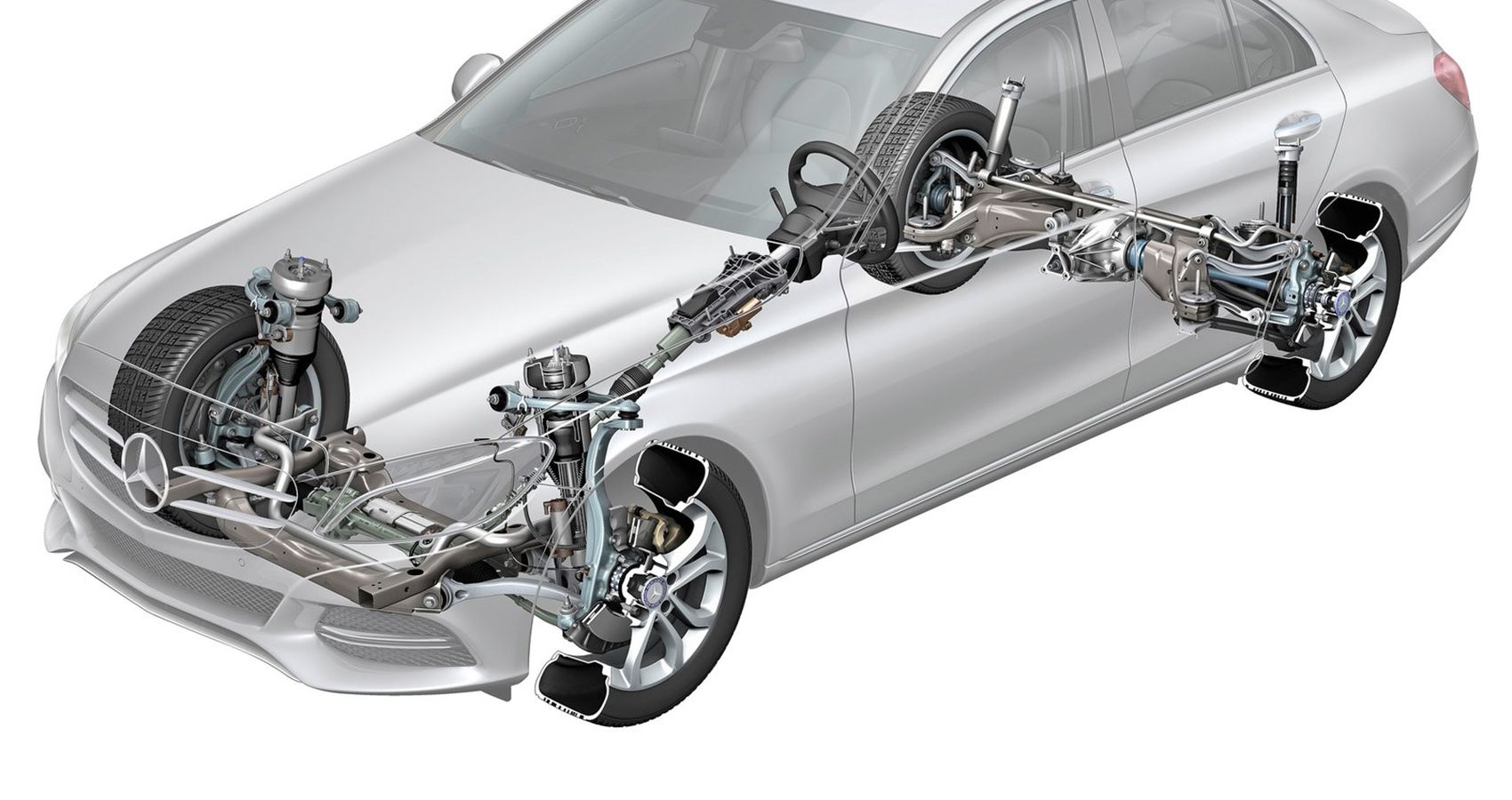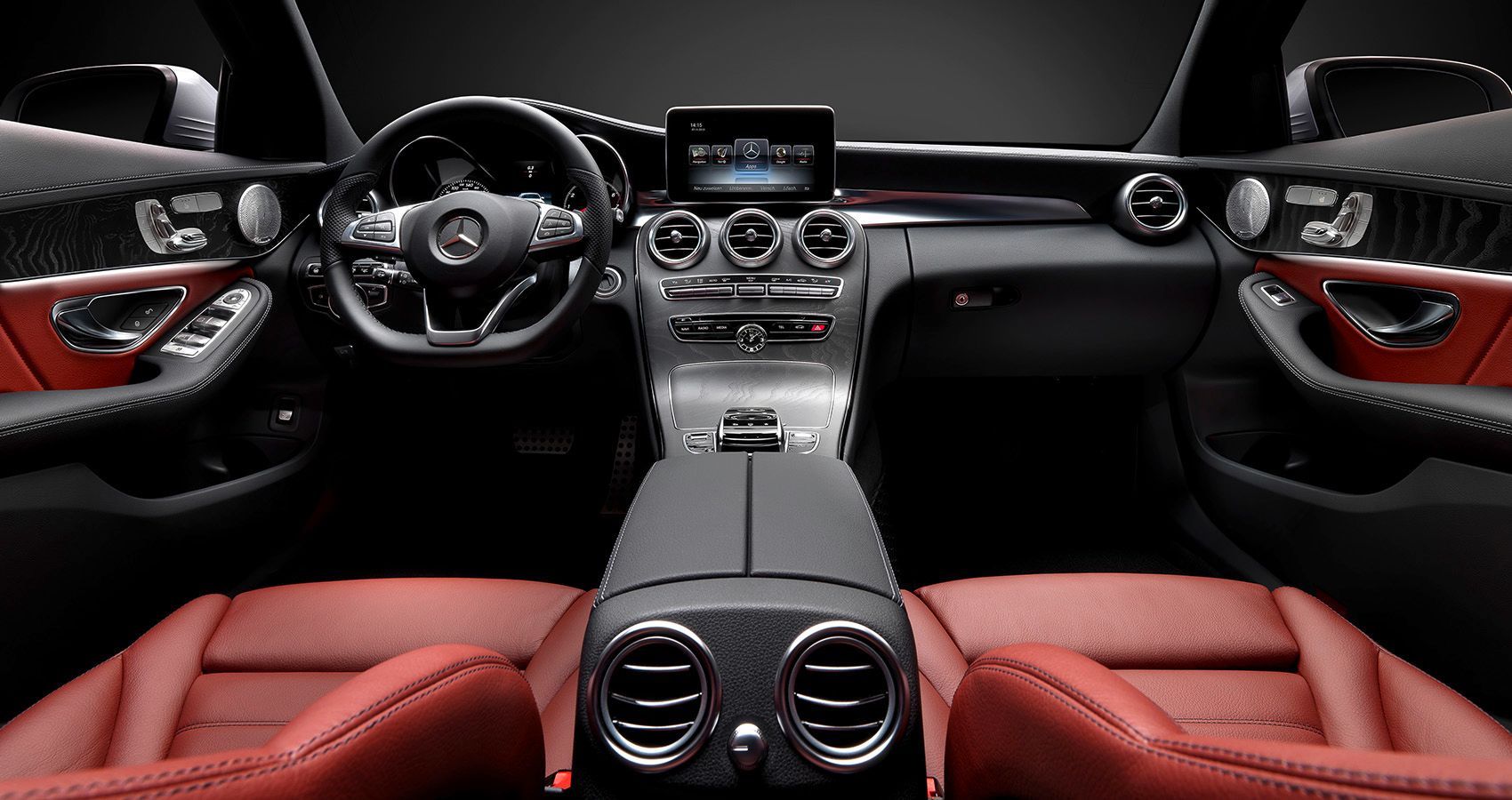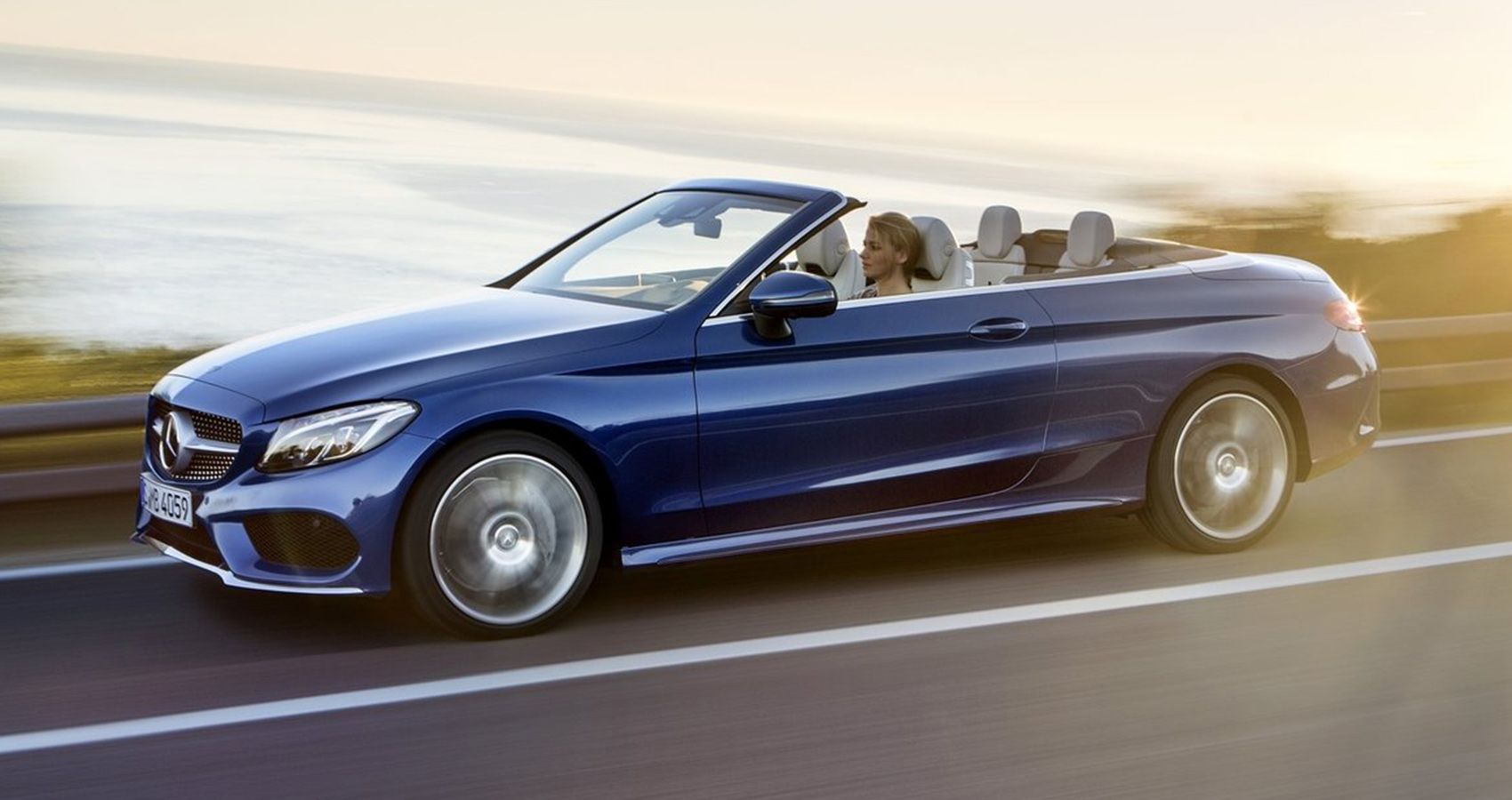Since its introduction in 1982 as the 190 Series, the C-Class has been Mercedes-Benz’s offering to a younger, more sporty-inclined luxury-car buyer, who to that point had limited luxury compact sedan choices. The C-Class designation began in 1993.
Its main rival is the BMW 3 Series, with the two annually vying for luxury sport-compact supremacy. Audi is the third German brand in the luxury sport-sedan mix, with Japanese competitors like the Acura Integra and Lexus IS, as well as various North American challengers from Cadillac (latest, CT4) and Lincoln (no current offering).
The C-Class is Mercedes-Benz’s top seller and serves as the entry point to the marque and the sport-compact entry for a generation of young, luxury-car buyers. The latest generation ramps up the sporty and luxurious qualities, while maintaining the premium standards of the Mercedes-Benz star.
1. 2014-2021 Mercedes-Benz C-Class
- Luxury/Sports combination
- Opulent modern interior
- Comprehensive bodystyle line-up
- Trim: C 250, C 300, C 350e, C 400, AMG C 43, AMG C 63
- Model: C-Class
- Engine/Motor: 1.5-Liter turbo 4-cyl, 2.0-Liter turbo 4-cyl, 3.0-Liter biturbo V6, 4.0-Liter biturbo V8
- Horsepower: 129 - 517 Horsepower
- Torque: 155 - 516 Pound-Feet
- Drivetrain: RWD, AWD
- Transmission: 6-speed manual, 7-speed automatic, 9-speed automatic
- MSRP: $35,800 - $85,600
- Relative affordability
- Sleek exterior design of all bodystyles
- Combination of sport and luxury
- Proliferation of interior switches
- Pricey options
Mercedes-Benz Mini-S-Class Style In An Affordable Compact Package
Since its introduction, the Mercedes-Benz C-Class has been affectionately called the Mini- S-Class. This fourth generation (addressed internally as the W205) comes closest without abandoning the C-Class hallmarks of sporty handling and youthful looks.
To appeal to a wide customer base, the Baby-Benz comes in four bodystyles – sedan, coupe, convertible and station wagon (not available for North America). Rear and all-wheel drivetrains (4Matic) set it apart from just about every other model in the Mercedes-Benz stable, while a proliferation of powertrains ensures everybody can find a model to suit everyday use and driving styles.
Mercedes C-Class Powertrains Go From Frugal To Muscular
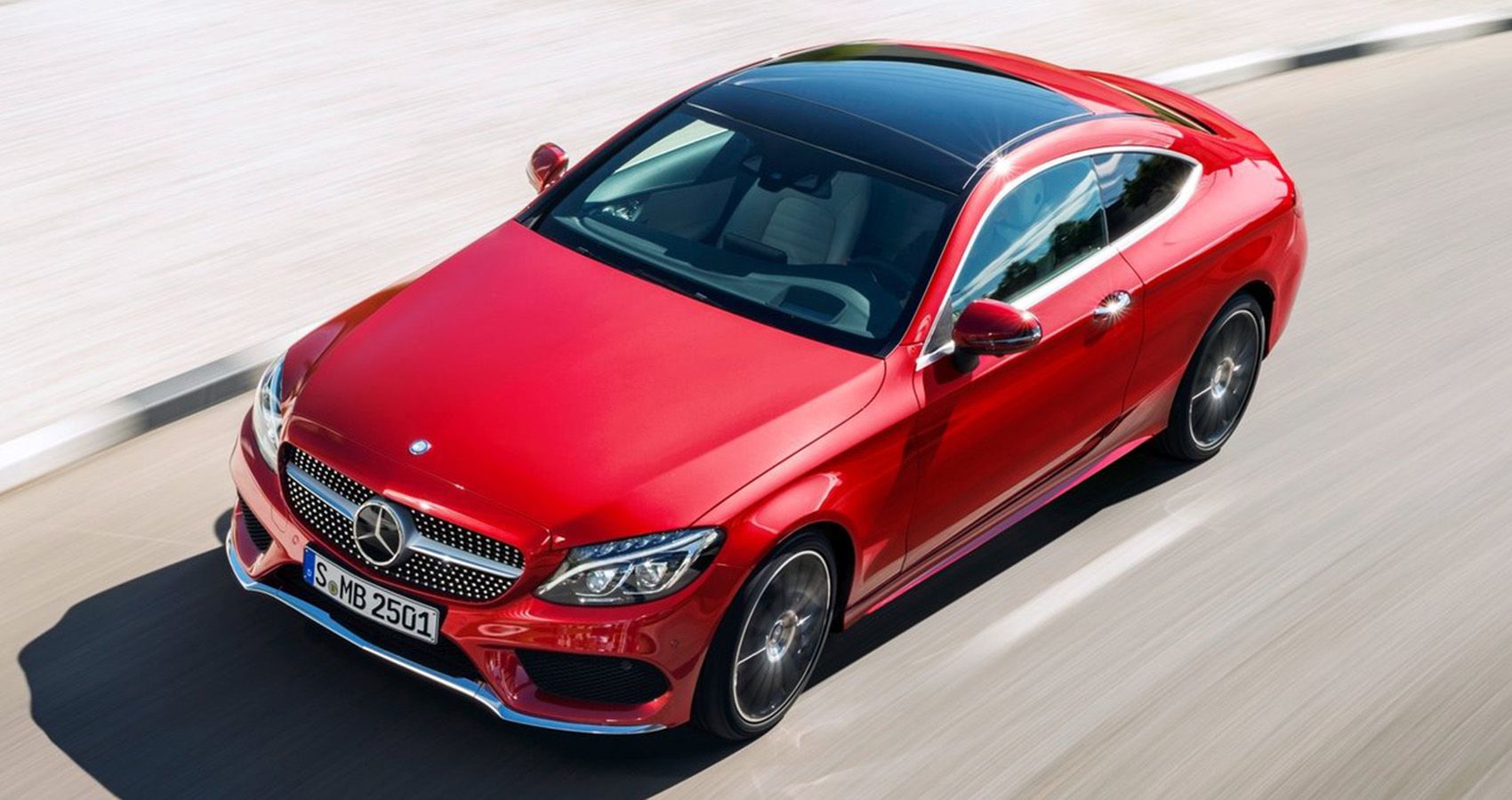

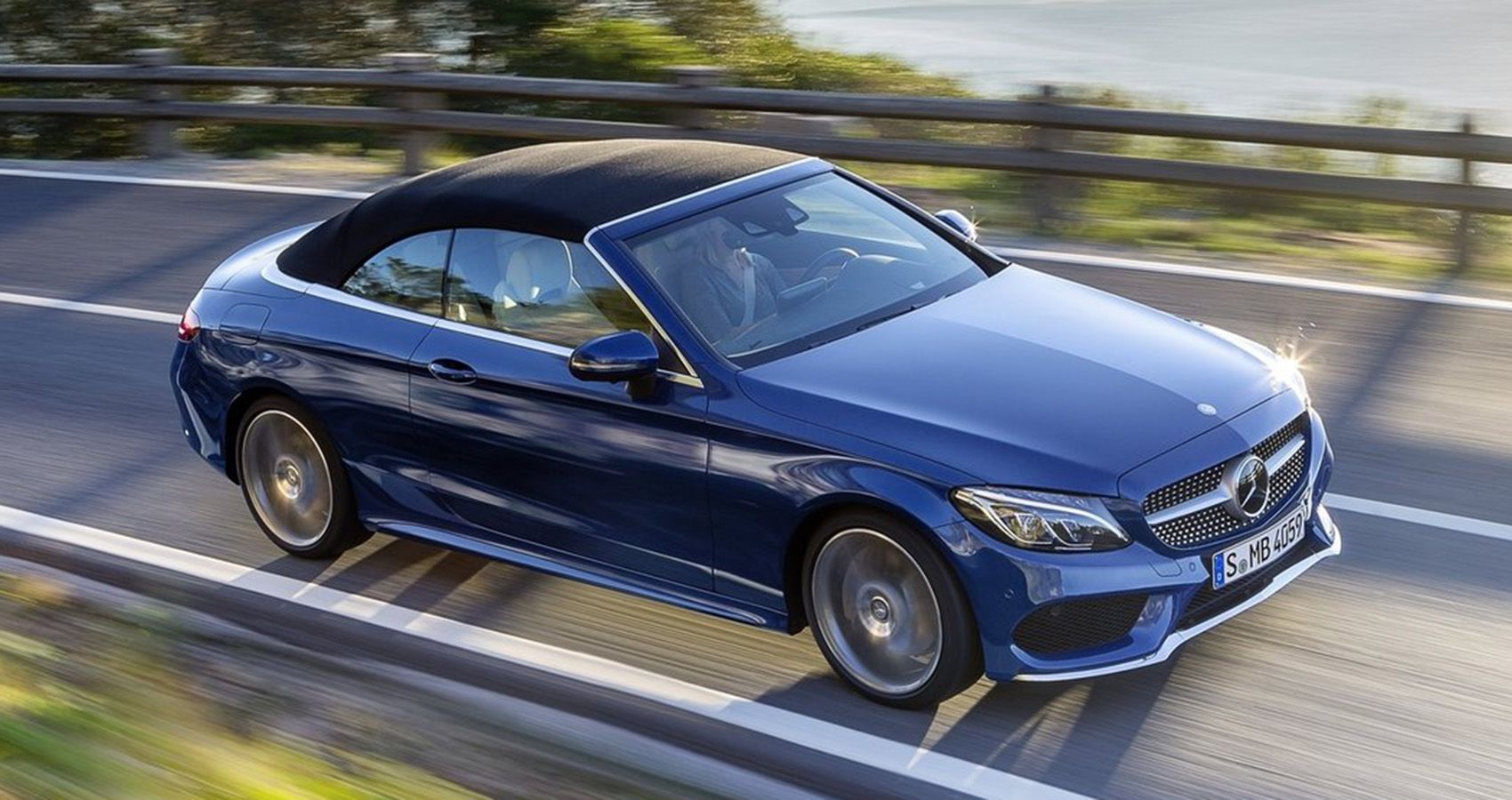
The Mercedes-Benz C 200 is the entry point to C-Class model range and offers a smooth and powerful 2.0-liter turbocharged four-cylinder engine that puts out 183 hp at 5,500 rpm and 221 lb-ft of torque available from near-idle (1,200 rpm) to 4,000 rpm.
A tuned-up version in the C 250 ekes out 211 hp and 258 lb-ft, with further massaging delivering 245 hp and 273 lb-ft in the C 300. In the final three years of production, the C 200 became a mild hybrid, using a 1.5-liter turbo 4-cylinder delivering 184 hp and 207 lb-ft, and adding 14 hp of electric boost from the alternator (also applied to the C 300’s 2.0-liter turbo, which was now producing 258 hp).
At the other end of the engine spectrum, the C 400 employed a 3.0-liter twin-turbo V6 that produced 333 hp at 5,250-6,000 rpm and 354 lb-ft of torque plateauing between 1,400 and 4,000 rpm, while the Mercedes-AMG C 43 massages engine outputs to 367 hp and 384 lb-ft (394 hp after 2018).
The Mercedes-AMG C 63 was the top performer in the C-Class range, using a 4.0-liter twin-turbo V8 that put out 476 hp at 5,500-6,250 rpm and 479 lb-ft at 1,750-4,500 rpm. An S variant massaged outputs to 517 hp and 516 lb-ft.
RWD Is The Norm In New Mercedes-Benz C-Class But 4matic Is Available
In keeping with most sports-compact applications, the C-Class comes standard in rear-wheel drive, with Mercedes-Benz’s 4Matic all-wheel drive system available. The permanent AWD 4Matic system is always active in the C-Class sedan, coupe and convertible, balancing power delivery to whichever of the four wheels can best use it.
Initially, RWD was the only option for the C 300, but that changed with the mid-cycle refresh. The V6-powered C 400 and AMG C 43 only came in 4Matic drivetrain, while the AMG C 63 always came only in RWD.
For the first two years, the wheels received power mostly from a 7-speed automatic (7G-Tronic), with the C 200 the only model available with a manual transmission (6-speed). Two years in, Mercedes introduced its 9-speed automatic (9G-Tronic), which became the transmission of choice across the line.
The only holdout was the AMG C 63, which used Mercedes-AMG’s paddle shifting Speedshift MCT 7-speed (9-speed after 2018, when an AWD variant also became standard on the AMG C 43 4Matic).
New Mercedes-Benz Suspension Balances C-Class Ride And Handling
The fourth-gen C-Class is the second Mercedes-Benz to use the company’s new Modular Rear Architecture (MRA) architecture, and results in weight savings of about 220 lbs. comparable to a steel platform. In addition to improving fuel-efficiency and crash-safety, the structure also allows for improved dynamic performance.
For the C-Class, it means less noise and vibration transmission into the cabin, and a lowering of the center of gravity to provide a base for a new suspension set-up and resultant improvements in handling.
Smooth, quiet rides are a hallmark of Mercedes vehicles, but the C-Class also has to satisfy a generation of buyers who want superior handling from their sport-compacts. So, Mercedes-Benz came up with a totally new independent setup to handle both the bumps, potholes and rail crossings, as well as the high-speed twists and corners.
The new 4-link front axle sits decoupled from the front struts to allow better lateral stability and steering feel from the road-speed-sensitive power steering. The optimized 5-link independent rear takes care of the straight-line stability and soaking up the jostles that impact rear seat comfort.
Further, suspension choices allow buyers to tailor their ride for comfort, key on comfort but add a bit of sporting flair, or go full-on sporty. And then, they can choose from the first segment application of a self-levelling air suspension (AIRMATIC) controlled at the driver’s fingertips through an AGILITY SELECT switch with pre-sets for Comfort, Eco, Sport and Sport+, or Individual configuration.
High-Class Mercedes Interior Belies Entry-Point C-Class
Befitting its reputation as a Mini S-Class, the C-Class interior sits on a level of comfort and luxury not usually seen in its segment. High-grade materials (wood, leather, polished metal, etc.) are great to look at and pleasant to feel, and offer a blend of purity, sportiness and opulence.
A completely reimagined center console houses controls necessary to the task of driving in a simply-laid-out seemingly-open space. The hand falls easily on the center console touchpad that offers fingertip control and haptic feedback over often-used functions, and allows the use of “handwriting” to enter numbers, letters and special characters.
A free-standing 7-inch screen (8-inch in COMAND-equipped models) is the centerpiece of the instrument panel, and although Mercedes usually gravitates toward too many single-function buttons and switches, their array and markings make them easy to identify and use.
A head-up system, displaying vehicle speed, navigation instructions, cruise control status and speed limit information, is new to C-Class.
Safety Was A Forethought In C-Class Redesign
The S-Class flagship paved the way for a new generation of Mercedes-Benz vehicles, and the new C-Class followed suit with the highest degree of driving aids, including Attention Assist to alert the driver to inattention or drowsiness, and Collision Prevention Assist Plus – an adaptive braking assist function that prevents or mitigates collisions from speeds as low as 4.5 mph.
Also included, the Distronic Plus adaptive cruise control semi-automatically controls stopping and acceleration in Stop & Go traffic, BAS Plus braking assist can not only sense cross-traffic but can also increase brake pressure if the driver is not braking strongly enough.
Perimeter cameras present a 360-degree view of the car and its surroundings and is especially helpful in parking situations, during which Active Parking Assist can completely take over with automatic steering and braking functions.
This generation C-Class marked the start of production at four facilities on four continents for their respective markets – Bremen, Germany (Europe), Beijing, China (Asia and Oceania), East London, South Africa (Africa) and Tuscaloosa, USA (North America) – with the series’ birthplace in Bremen, Germany providing oversight over production. North American C-Class cars came off the line in Tuscaloosa, Alabama.
Mercedes-Benz C-Class Available In Three Themes
Beyond the bodystyles and different engine-designated names, the fourth-generation C-Class is available in three design and equipment themes that skew the exterior and interior presentations, each with various levels of standard equipment and available options.
The AVANTGARDE is the sporty C-Class, while the EXCLUSIVE line places more emphasis on sophistication and modern luxury. The AMG line is the performance-oriented theme, skewing decidedly toward sportiness.
Manufacturer Suggested Prices at launch started at $35,800 for the sedan (historically the least expensive model of the line over it’s seven-year run) and topped out at $85,600 for the Cabriolet version of the AMG C 63 S. Prices climbed at an average annual rate of about 12%.
Coupe MSRPs started at $38,000 for a 2014 C 250 and climbed to $47,200 for 2021 for a C 300, while Cabriolet MSRPs climbed from the 2016 C 300’s $50,900, to $54,700 for the C 300. 4Matic all-wheel drive consistently added $2,000 over the fourth-generation’s run.
The MSRP for an AMG C 63 sedan climbed from $60,250 (2014) to $68,600 (2021), while the AMG C 43 went from $52,000 (2016) to $56,500 (2021).

